ASUS ROG Phone 8 Pro review: The gaming phone is all grown up
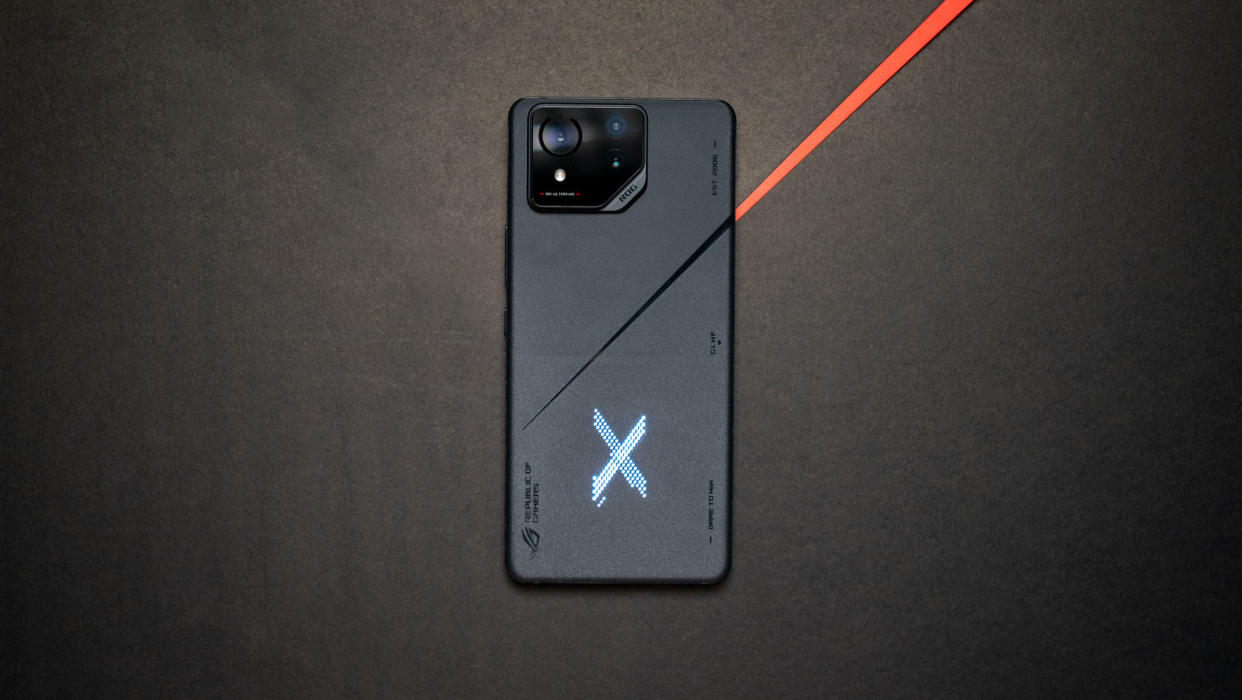
ASUS followed a similar pattern with its gaming phones over the last six years: roll out a device with aggressive styling, the latest internal hardware, massive battery, and unique gaming extras along with an exhaustive accessory ecosystem. Last year's ROG Phone 7 Ultimate in particular was outstanding, delivering all the features you could ever ask for in a gaming phone.
For 2024, ASUS is taking a different strategy — instead of making a phone just for gamers, the brand is rolling out a device that can do so much more, while still being the best at gaming. It is an ambitious undertaking, and after using the ROG Phone 8 Pro as my daily driver for just over three weeks, I can safely say that ASUS managed to pull it off; the device is a terrific all-rounder that goes above and beyond a traditional gaming phone.
The ROG Phone 8 Pro has an all-new design that brings it in line with mainstream devices, and you get overhauled cameras with a brand-new telephoto lens with 3x optical zoom, IP68 ingress protection, and wireless charging. You also get clean software with plenty of unique features, and the battery easily lasts two days. Even though the phone is aimed at gamers, it is just as good as any traditional flagship in most areas, and that's no small feat.
ASUS ROG Phone 8 Pro: Price and release date
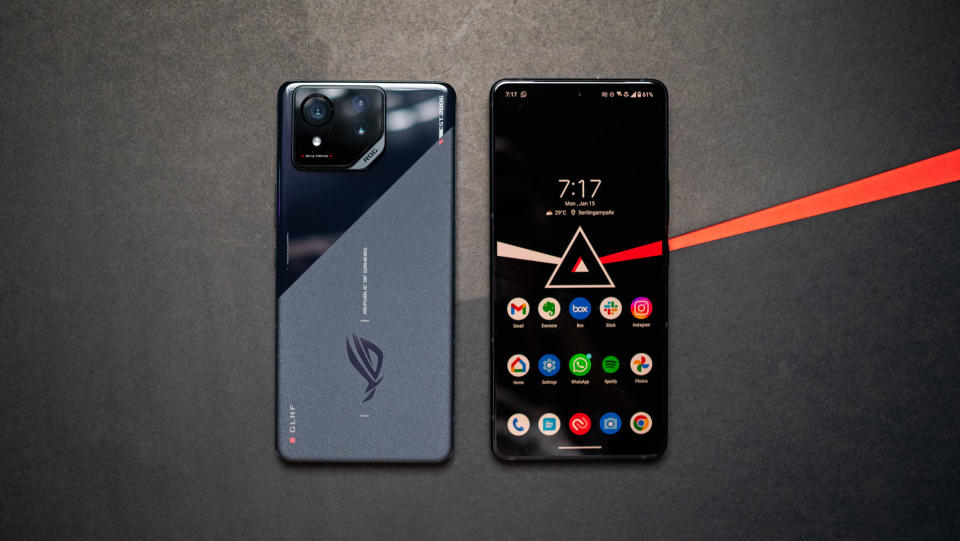
ASUS unveiled the ROG Phone 8 Pro on January 8, and the phone is going on sale in select countries starting January 16. There are two models available at launch: a standard ROG Phone 8 that will be sold in Rebel Grey and Phantom Black color options, and an ROG Phone 8 Pro model that's debuting in a Phantom Black hue. \
The standard model with 16GB/256GB costs $1,099 in the U.S., but those pre-ordering the device will be able to pick it up at $999.
The Pro variant is available in a 16GB/512GB version that costs $1,199, and you also get a 24GB/1TB model that comes with the new AeroActive Cooler C bundled in the box. This is the one I'm using, and it is debuting at $1,499 globally.
ASUS ROG Phone 8 Pro: Design
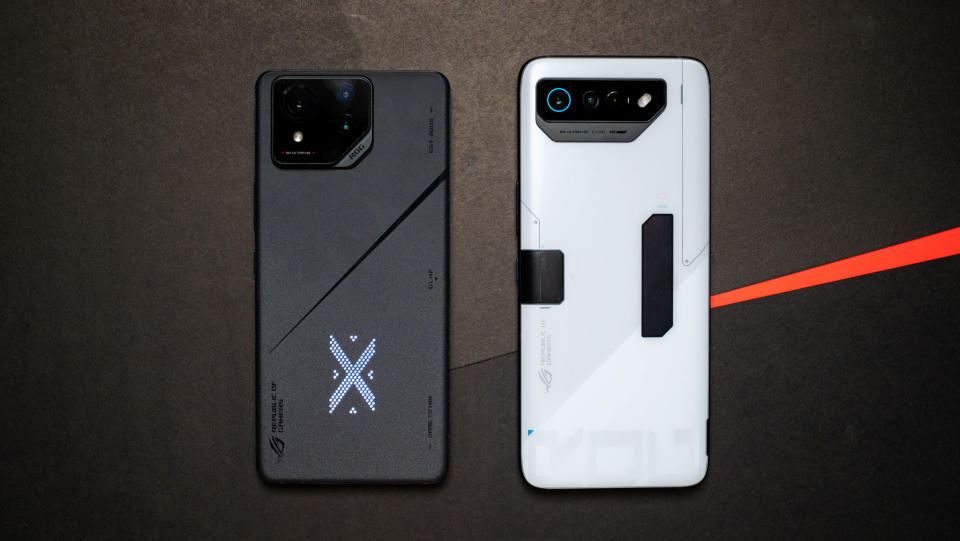
The biggest difference with the ROG Phone 8 Pro is the design; ASUS went with a much more conservative design this time around, and that allows the brand to target a mainstream audience with the device. While earlier models in the series had plenty to offer, the aggressive design with etched lines and massive batteries meant that they were only a viable option for enthusiast gamers — that isn't the case this year.
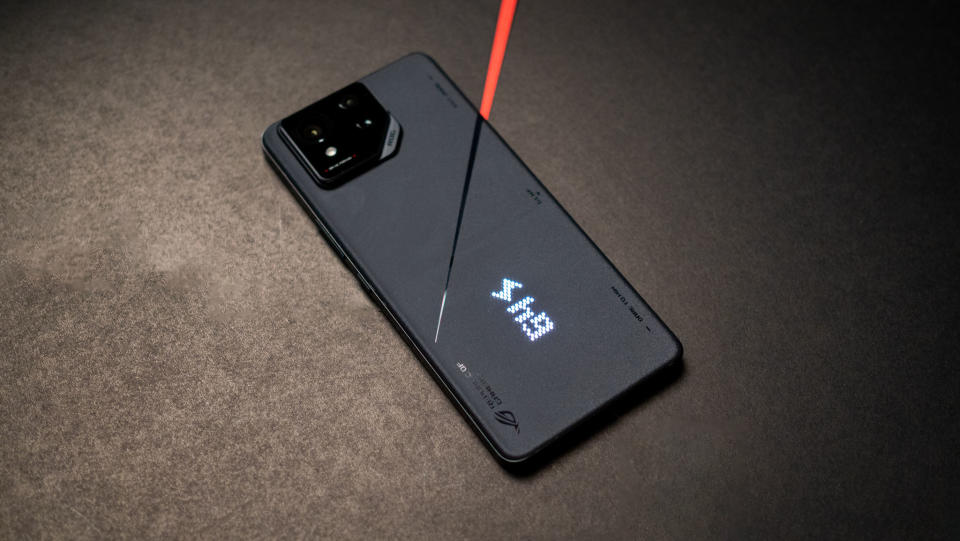
The new design looks mature, and it gives the device plenty of sophistication — something I couldn't say about its predecessors. Look, I liked the gamer-focused designs of previous years, but I will agree that the new design language is much more elegant, and it still manages to look cool. The back has a satin texture that feels great to hold and use, and ASUS nailed the in-hand feel — everything from the dimensions to the weight distribution is just right.
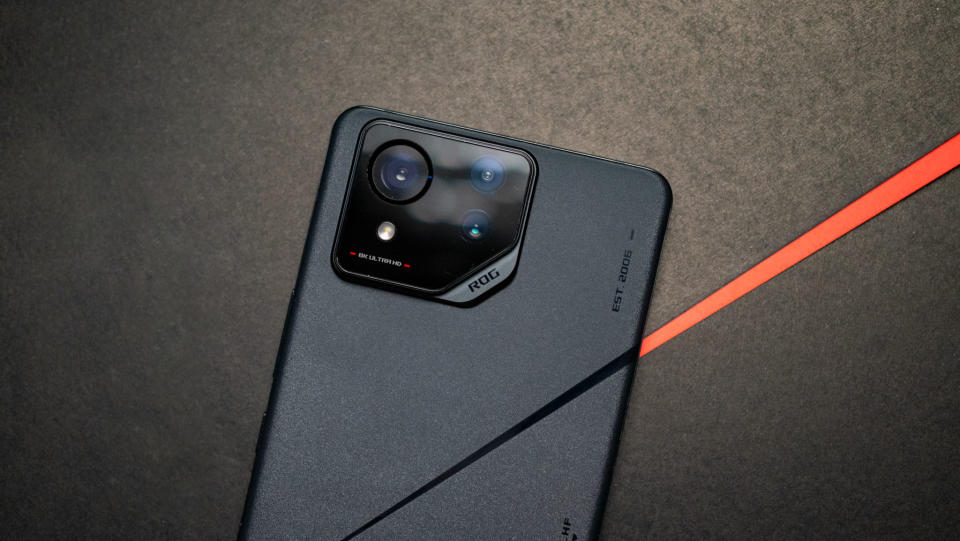
The camera island is larger than previous iterations, and that makes sense considering the new lenses on offer. Thankfully, the phone doesn't wobble too much when using it on a table, and the camera housing doesn't stand out — ASUS did a good job creating a cohesive design aesthetic.

On that note, the ROG Phone 8 Pro weighs 225g, a full 21g lighter than its predecessor. That makes a huge difference in daily use, and more than anything else, it's this change that affects real-world usability the most. While I used earlier models in the series as my daily drivers, they were heavy and unwieldy at times, and having a lighter phone is pretty great.
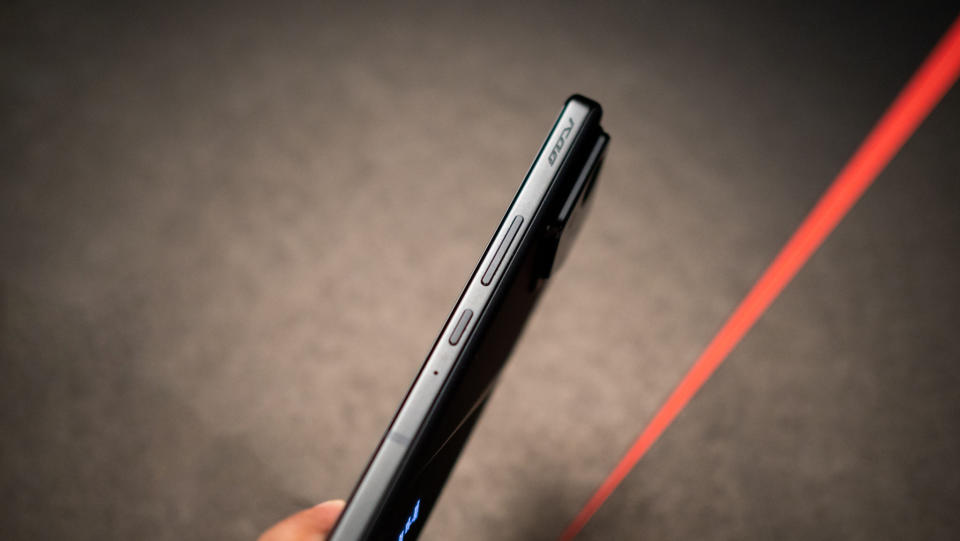
Another design change that I like is the flatter sides; there's still a subtle curve at the back so you can easily hold the phone, but you now get more width along the sides to comfortably hold the phone. And while a lot of that gamer aesthetic has given way to a traditional design, you still get RGB lighting with the standard version.
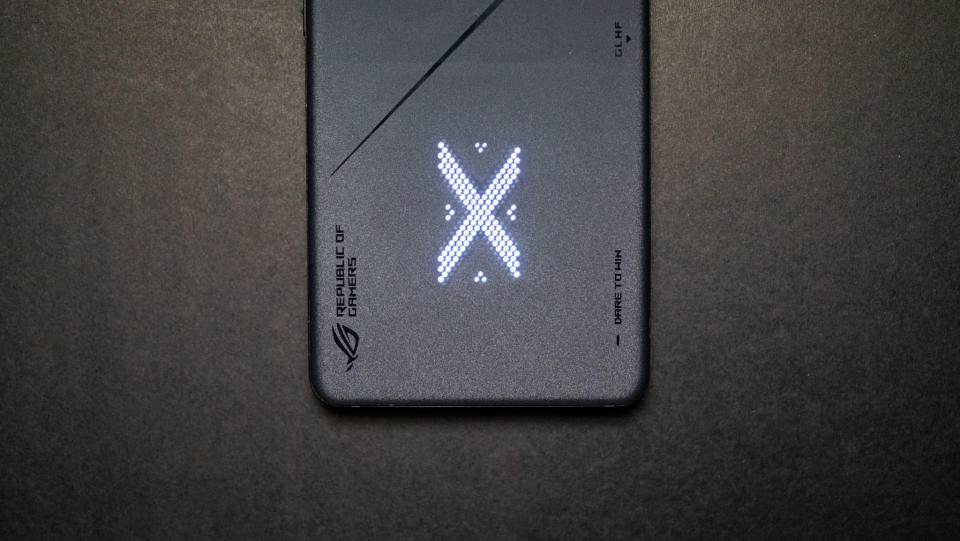
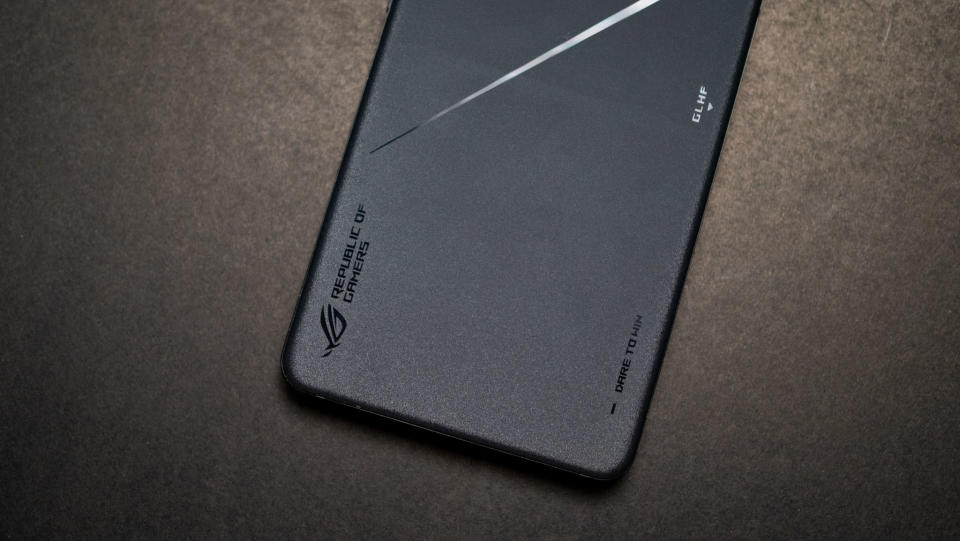
The Pro model doesn't get RGB lighting, instead featuring an AniMe Vision panel that uses several mini-LEDs to show off custom designs, incoming call alerts, and much more. I'll cover the panel in more detail in the section below, but what's interesting is that if you don't want to use the feature, you can turn it off entirely, and it doesn't look like the phone has a secondary screen at the back at all — again, this plays into the narrative that ASUS wants a mainstream audience to buy the device.
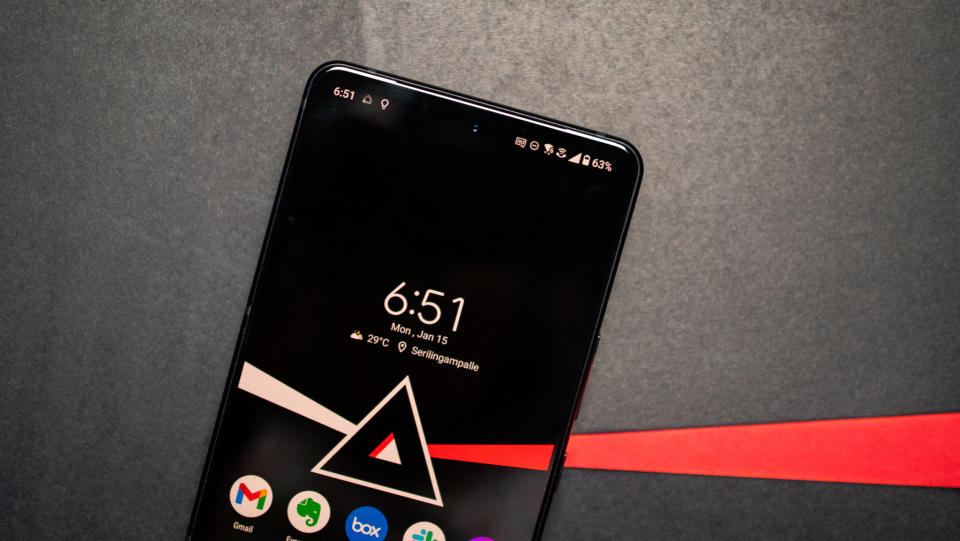
Yet another design change is the bezels at the front, or lack thereof. ASUS used chunkier bezels until last year, but the ROG Phone 8 is getting ultra-thin bezels on all sides, with the phone now offering a hole-punch cutout. This move was inevitable considering all other phones switched to a similar system several years ago, and regardless of usability, the larger bezels meant the ROG Phone 7 looked a bit archaic — that isn't an issue with this generation.
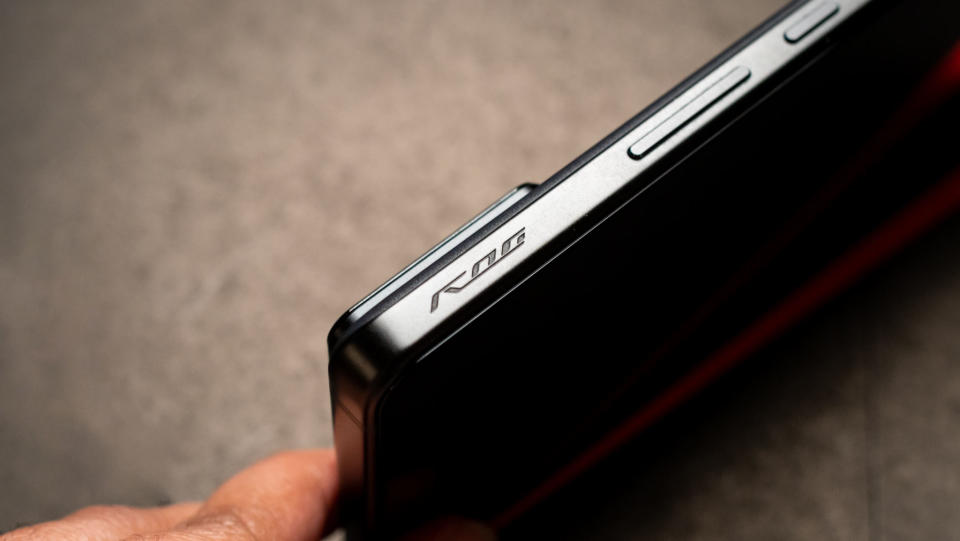
The ROG Phone 8 is sleeker as well, coming in at 8.9mm, or 1.6mm thinner than its predecessor. You still get the ultrasonic AirTriggers on the sides, and like previous years, they're just as customizable. And yes, the 3.5mm jack is intact as well, and you get ASUS's AudioWizard feature that allows you to customize the sound to a granular degree. Dirac Virtuo is available too, and it lets you create virtual surround sound when using IEMs and wireless earbuds. And just to cover the basics, you get all high-res audio codecs.
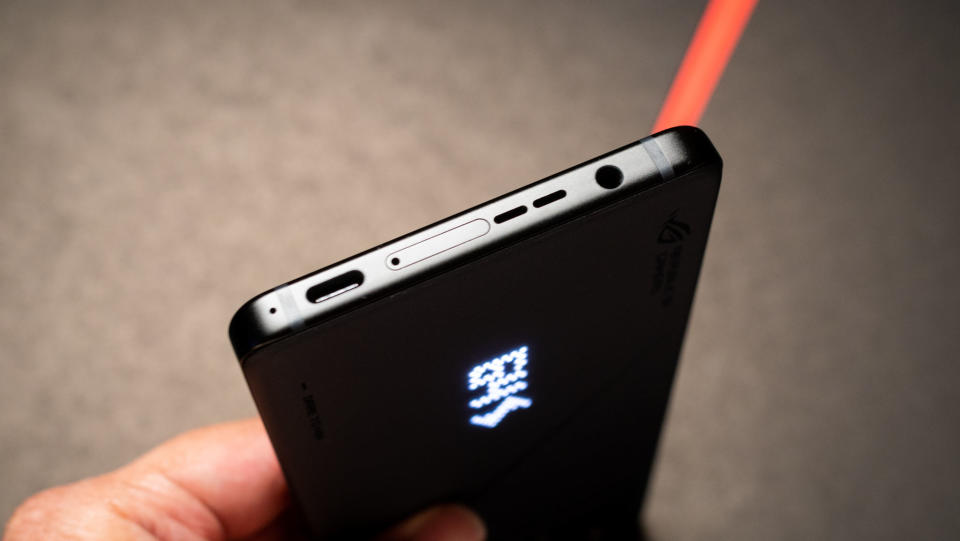
The power and volume buttons are located on the right, the 3.5mm jack is at the bottom, and there's a SIM card tray next to it. The USB-C charging port is mounted to one corner at the bottom, and my favorite feature is back: a side-mounted USB-C connector. You can use this to charge the phone, and it connects over the same USB 3.2 Gen 2 standard as the main port, and is highly convenient. There's also a nifty back tap gesture that's customizable, and this can be used to launch the flashlight, camera, or any other action.
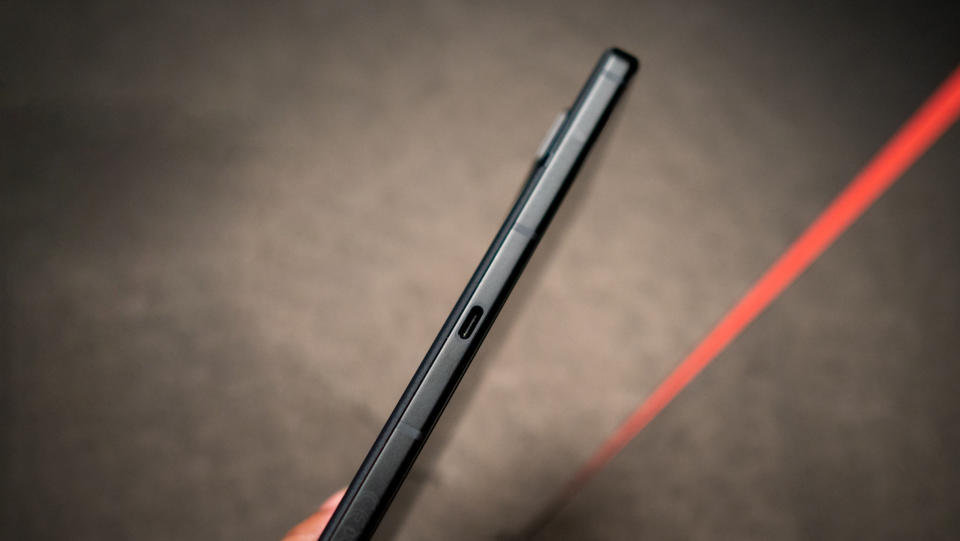
A key differentiator this year is the inclusion of IP68 ingress protection, with the ROG Phone 8 Pro becoming the first gaming phone to roll out this feature. This allows the device to weather the elements, and in the three weeks I used the device, I was able to test its efficacy — it holds up just as well as the best Samsung phones in this regard.

Rounding out the list of exhaustive features, the phone comes with an optical in-display fingerprint sensor. It is ideally located, but I had issues with the sensor being slow to authenticate. It takes a smidgen longer than other phones to register, and there were instances where it failed to authenticate. Outside of that quibble, I didn't notice any other issues in this area.
Overall, the ROG Phone 8 Pro looks every bit as premium as its price tag suggests — this is a high-end phone that's designed to stand out, and it manages to do that with ease.
ASUS ROG Phone 8 Pro: Display

ASUS outfitted a 6.78-inch panel on the ROG Phone 8 Pro, but because the device itself is thinner, shorter, and narrower than previous years, you get the feeling that the panel is much bigger. There's still the same 165Hz refresh, but the panel is packing serious upgrades this time: it now goes up to 2,500 nits, and you get LTPO tech that dynamically switches the refresh down to 1Hz when viewing static content. The screen is protected by a layer of Gorilla Glass Victus 2.
The Samsung AMOLED panel is gorgeous, offering vibrant colors with excellent contrast levels. While the screen itself is very good, I noticed a few issues: the ambient light sensor isn't quite as fast as other devices at adjusting screen brightness when going into a dark room, and the feature to wake the panel whenever you get a notification doesn't work — the screen just lights up an infinitesimal second.
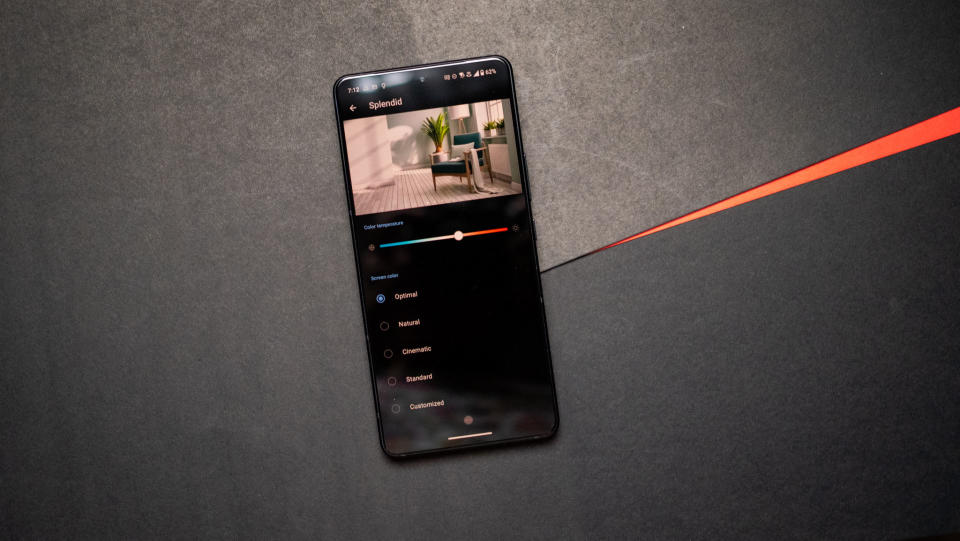
The Optimal color mode is enabled out of the box, and colors have a tendency to be a bit cooler; even in the Natural mode, the panel had a distinctly cooler hue. Thankfully, it's pretty straightforward to tweak the color balance, and you can set up an always-on mode, enable anti-flicker that reduces strain on the eyes. The eye protection feature now covers all refresh rates, kicking in from just 1Hz all the way to 165Hz.
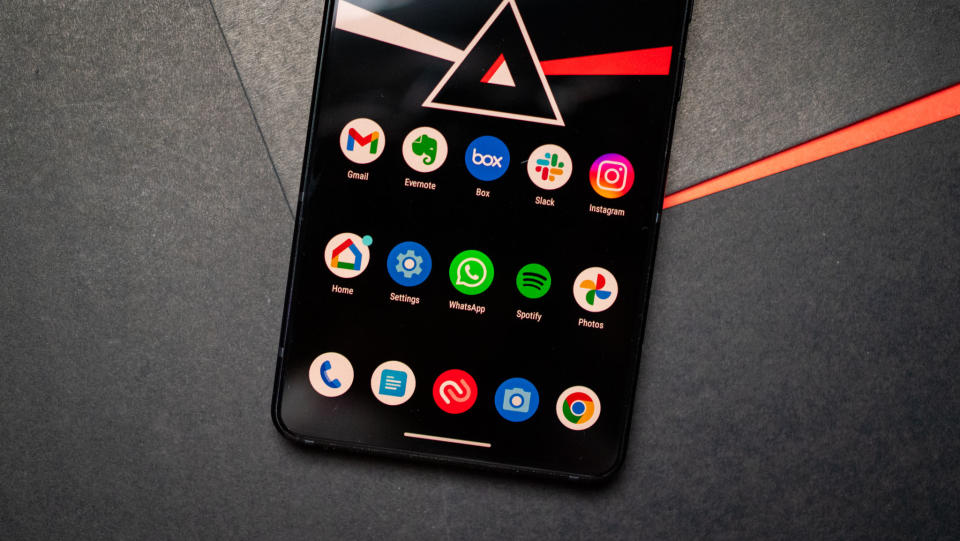
While ASUS was obstinate in the past about covering up the top and bottom portions of the screen with large bezels — noting it would make holding the phone easier — the new design immediately makes the device look that much more modern. But if you're used to the idea of those bezels, you can go into Armoury Crate and enable a Centered view that covers up the camera cutout.
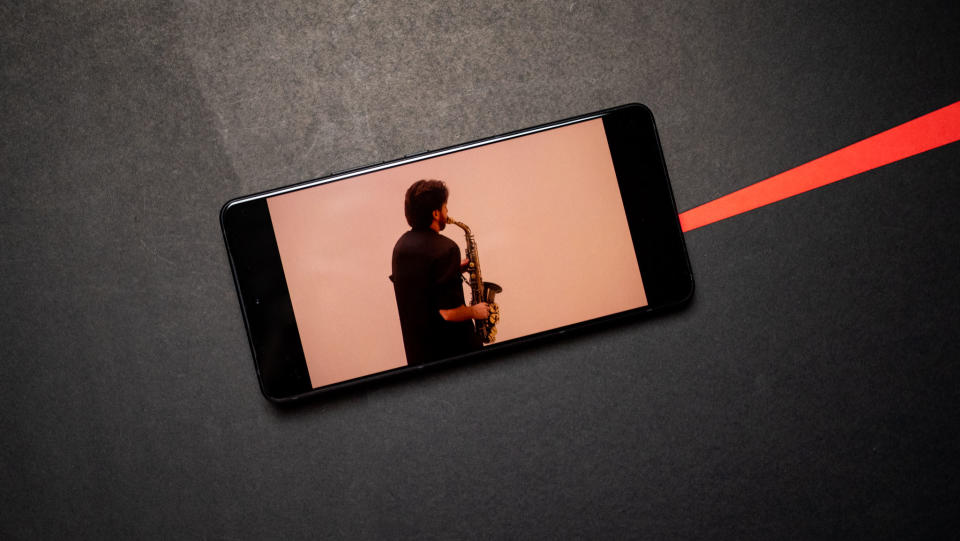
As you'd imagine, the ROG Phone 8 Pro holds up incredibly well in daily use. Unlike Chinese manufacturers, ASUS doesn't restrict high refresh rate gaming in any way, and titles that can take advantage of this feature are fantastic on the phone. The device is just as comfortable while streaming content as well, and I didn't see any issues in this area. You get loud stereo sound, and it is just great to be able to plug IEMs to the phone without needing a dongle; I used the device with Sennheiser's excellent IE600 most of the time.
Of course, you don't just get one screen here — the ROG Phone 8 Pro has an AniMe Vision panel at the back that features 341 programmable mini-LEDs. These can be customized to show text, images, and other effects. You get a series of 20 animations installed out of the box, but you can always make your own. It also shows battery charge level, notification alerts, and the time. It was a bit glitchy at times as scrolling text wouldn't actually scroll, but toggling the feature on and off sorted out the issue.
ASUS ROG Phone 8 Pro: Performance
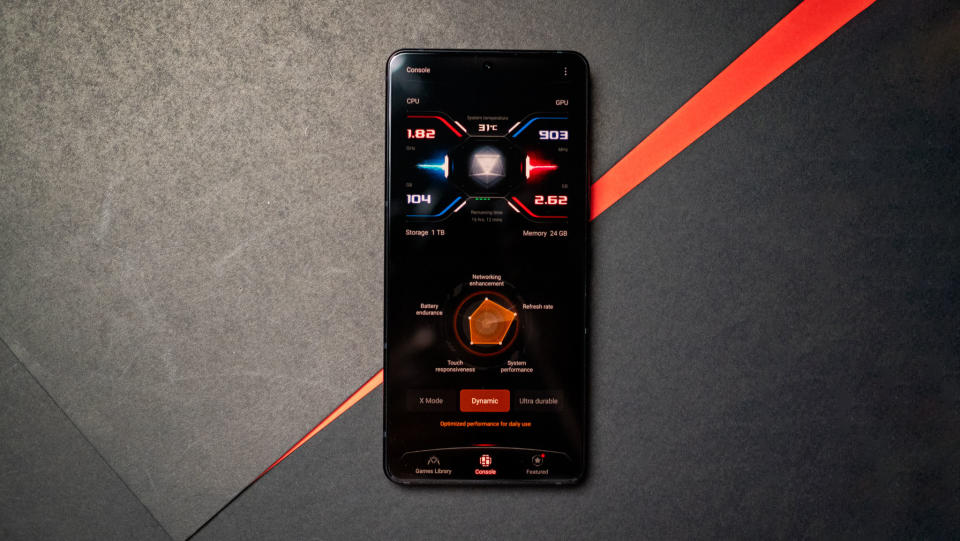
A big draw with gaming phones is the hardware, and ASUS knows a thing or two about delivering a great hardware package. The ROG Phone 8 Pro is powered by the Snapdragon 8 Gen 3, and you get up to 24GB of RAM and 1TB of storage. The phone has a unique thermal system that's designed to offer lag-free gaming even with extended use, and this year, ASUS is adding a second heatsink to increase thermal efficiency.
Basically, this is the best gaming phone you can get at the moment, and there really isn't any other device that delivers quite the same level of sustained performance in demanding titles. There's also a new AeroActive Cooler X that's better than last year's model; it has a built-in kickstand, adds two physical buttons that can be customized to in-game actions, and a 3.5mm jack.
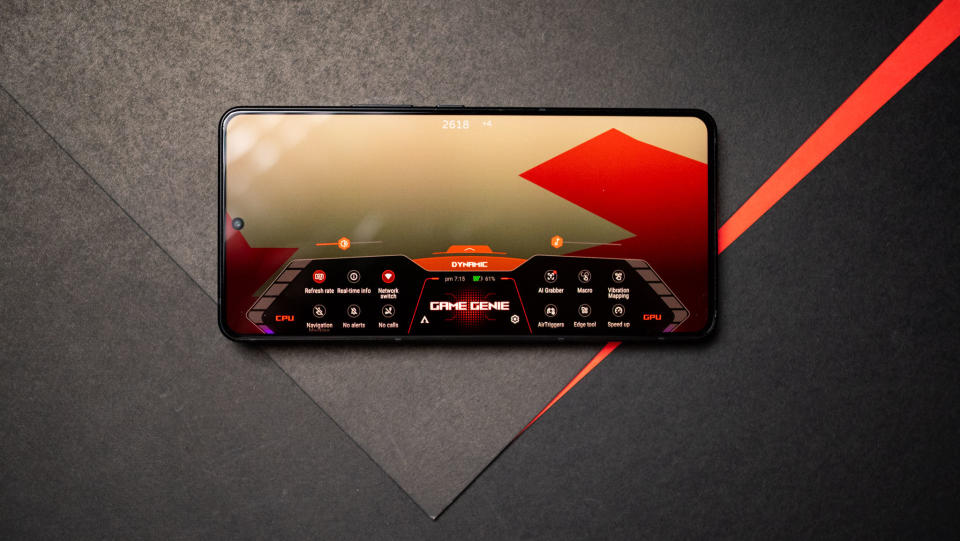
The ROG Phone 8 Pro is phenomenal at gaming — that has been the case with its predecessors as well. I get to use all flagship devices released over the course of the year, and where ASUS differentiates itself is the optimization; the ROG Phone 8 Pro lets you play a wider selection of titles at 120fps and beyond, and it does not throttle even during extended gaming sessions. This isn't the case with most other devices, which usually throttle significantly after hitting the 30-minute mark.
This is evident in synthetic workloads as well, and the phone hit a stability score of 93.80% in 3DMark's Solar Bay stress test — that's leagues better than the 40 - 50% that most phones manage.
On that note, the phone tends to get hot during marathon gaming sessions, but it isn't uncomfortable. The only time when the device got too hot to handle was after running 3DMark's stress test; it went up to 53 degrees Celsius, and that's seven degrees more than the iQOO 12 and Vivo X100 Pro managed.
In real-world gaming scenarios, I didn't see the device crossing 42.3 degrees. The Snapdragon 8 Gen 3 tends to run a little hotter as it has increased headroom, but then again, you get much better performance.
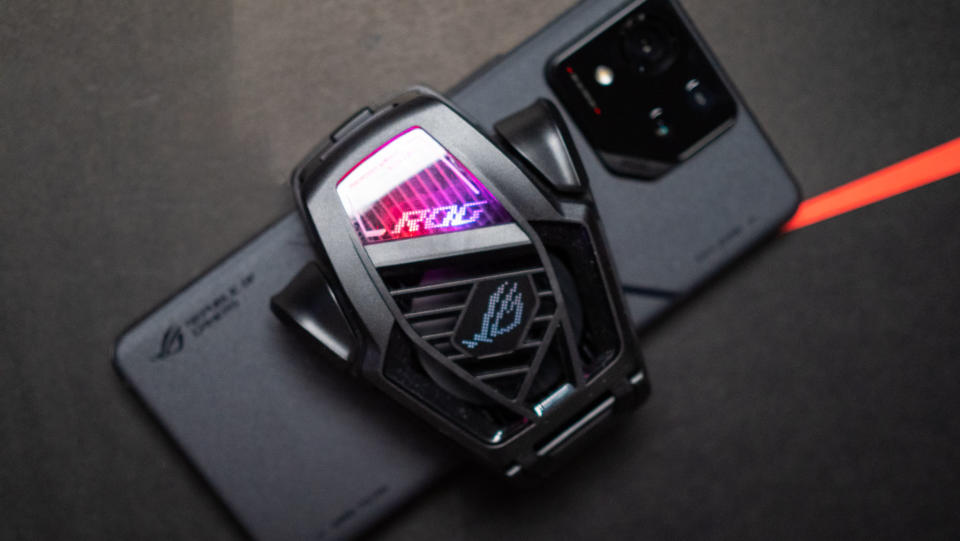
I also like the amount of customizability you get when it comes to gaming. AirTriggers continue to be a handy utility, and you can easily assign in-game actions to the ultrasonic triggers. Similarly, Armoury Crate lets you customize settings for individual titles, and toggle between usage modes: Dynamic, Ultra durable, and X Mode. X Mode turns things up a notch and maximizes the device's hardware potential, Dynamic mode is great in daily use, and Ultra durable is designed to eke out the best battery life.
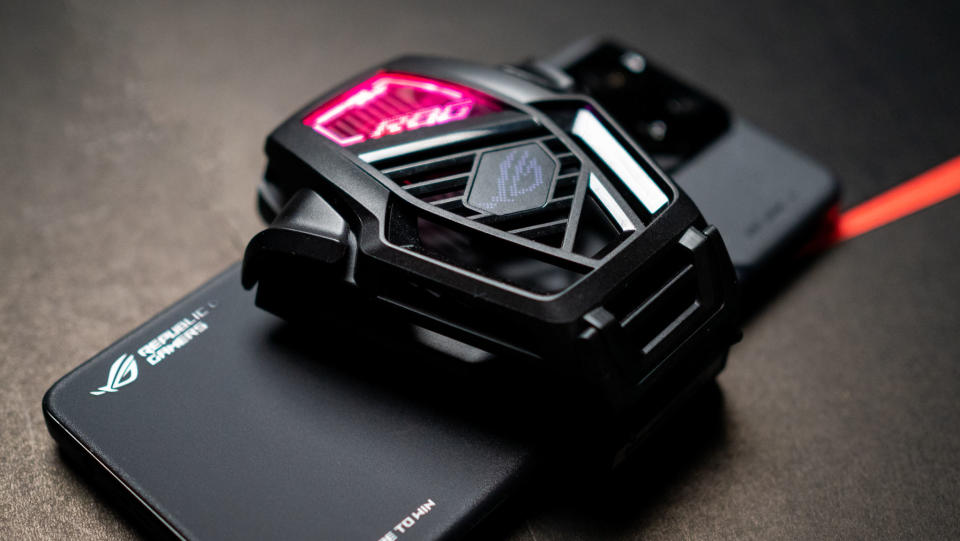
Thanks to Game Genie, you can set up macros, record games, change notification settings, and so much more while you're within a game. And if you're interested in getting the 24GB/1TB model, the bundled AeroActive Cooler X does a great job with thermal management.
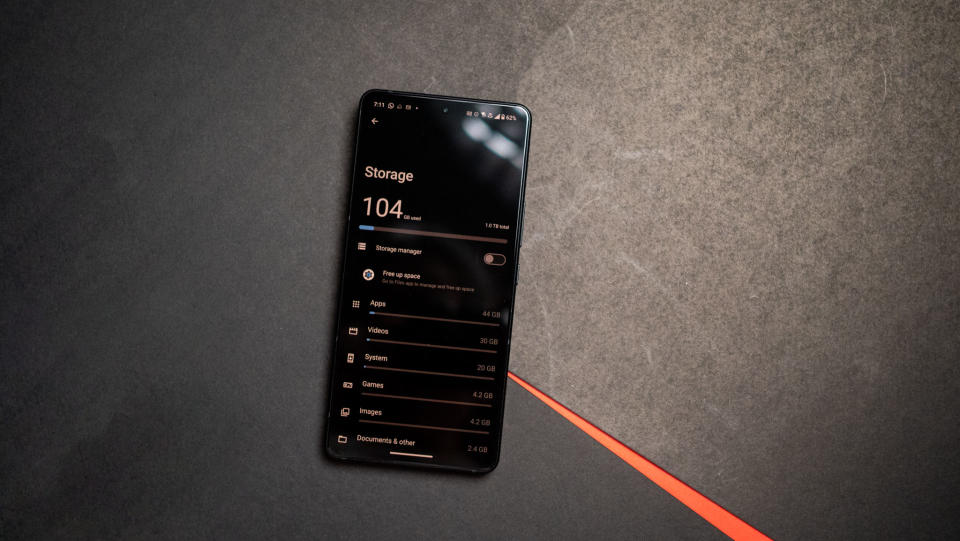
If you're undecided what model to get, the 1TB storage basically alleviates any worries around running out of storage. I switched to this device from the Pixel 8 Pro and its paltry 128GB of storage, and after just two months of use, I filled up 85% of the available storage. I'm currently using 104GB on the ROG Phone 8 Pro, and that is just 10% of the total storage on the device. Crazy.
Coming to connectivity, the ROG Phone 8 Pro has Sub-6 5G bands with global connectivity, a Wi-Fi 7 modem that makes a sizeable difference if you've made the switch to a Wi-Fi 7 router, Bluetooth 5.3, NFC, and dual-band GPS. There's also a really good vibration motor, and it delivers good feedback when using the keyboard and navigating the UI.
ASUS ROG Phone 8 Pro: Battery
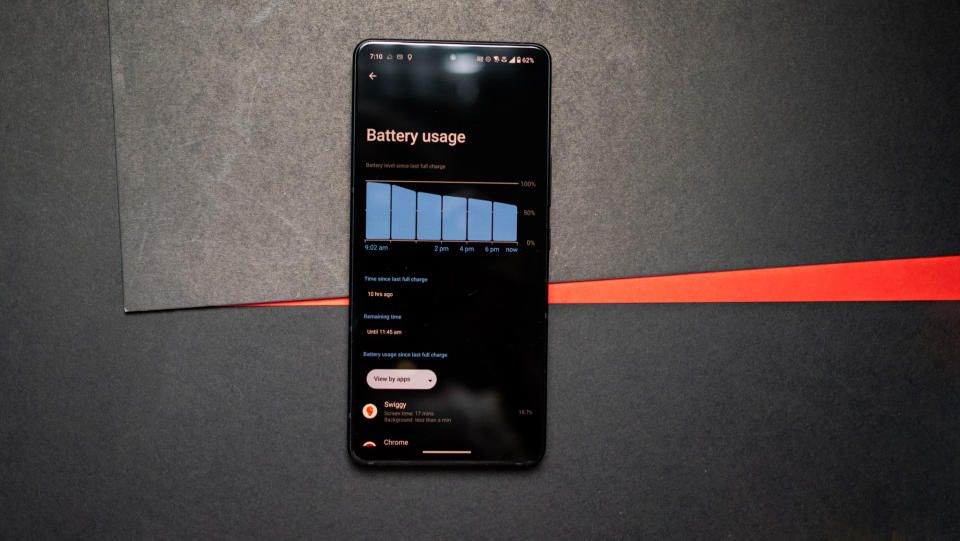
ASUS offered a 6,000mAh battery in earlier iterations of ROG Phones, but this year, the brand is offering a 5,500mAh battery. While it is smaller than its predecessors, you still get terrific battery life. There was never an instance where I needed to charge the phone before the end of the day, and even with heavy use, the phone managed to last a day and a half with ease.
In fact, most of the time, I only charged the phone once in two days, and in this particular area, there are absolutely no issues. Of course, if you're looking to get the device primarily to play games, you will need to plug in it at the end of the day, but there's no reason to have any sort of battery anxiety.
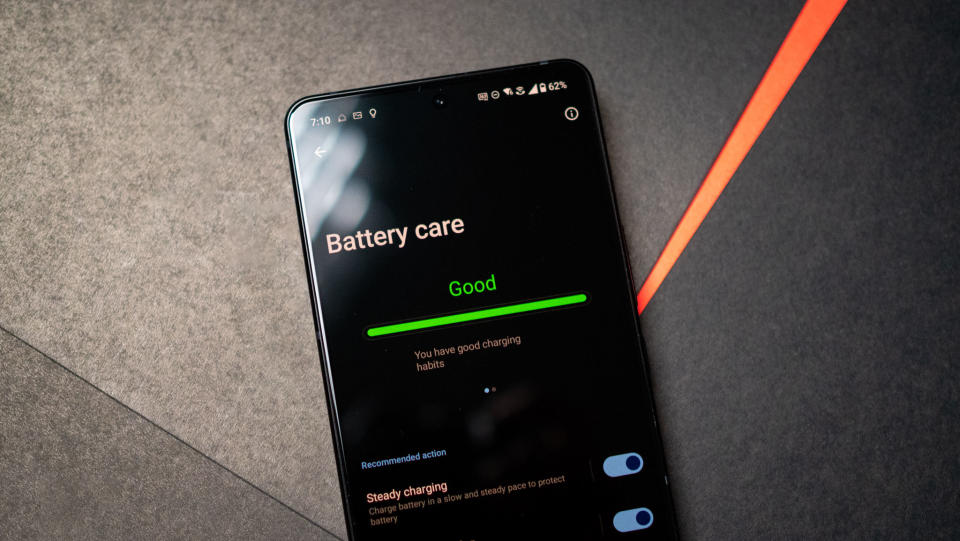
The phone charges over the USB PD 3.0 standard, going up to 65W. ASUS bundles a charger in the box, and you can use it to charge other accessories and phones as well. A full charge takes a smidgen over 40 minutes, with the phone hitting a 50% in 15 minutes. A big addition this time is the inclusion of wireless charging; the phone uses the Qi standard and goes up to 15W.
ASUS offers the same battery safeguards as you get in most other phones, including steady charging that charges the phone slowly, scheduled charging, and a charge limit that can be set to as low as 80%.
ASUS ROG Phone 8 Pro: Cameras

ASUS is making a big deal about the cameras this time around, and it's easy to see why; earlier devices in the ROG Phone series had lackluster cameras that were an afterthought, but with the ROG Phone 8 Pro, you're getting a reliable package. The phone has a 50MP Sony IMX890 primary lens that's joined by a 13MP wide-angle module and 32MP telephoto lens with 3x optical zoom and OIS. The zoom lens is able to deliver shots up to 5x with no noticeable difference in quality, and it hits 30x via digital zoom.
The phone uses the same six-axis gimbal stabilization that debuted on the Zenfone 10, and it makes a noticeable difference — particularly while shooting videos. The camera interface is standard, and you get the shooting modes in a ribbon at the bottom, toggles for all the various lenses, Google Lens button, flash, beauty effects, and a pull-down menu that gives you access to all the settings. Up front, you get a 32MP module that can now shoot at 0.7x in addition to the usual 1x mode.
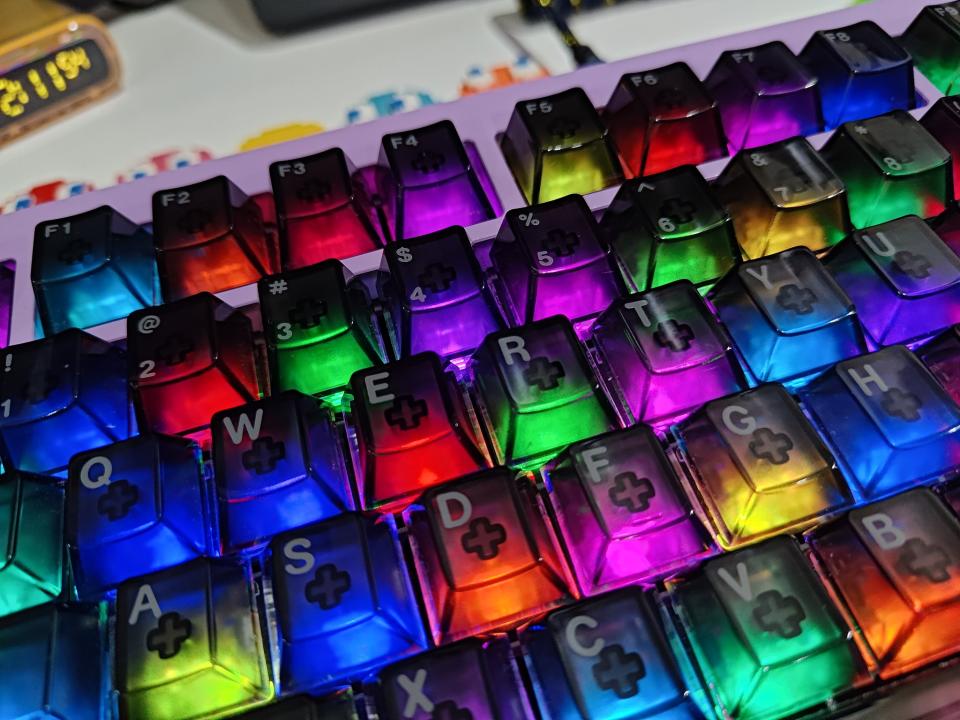
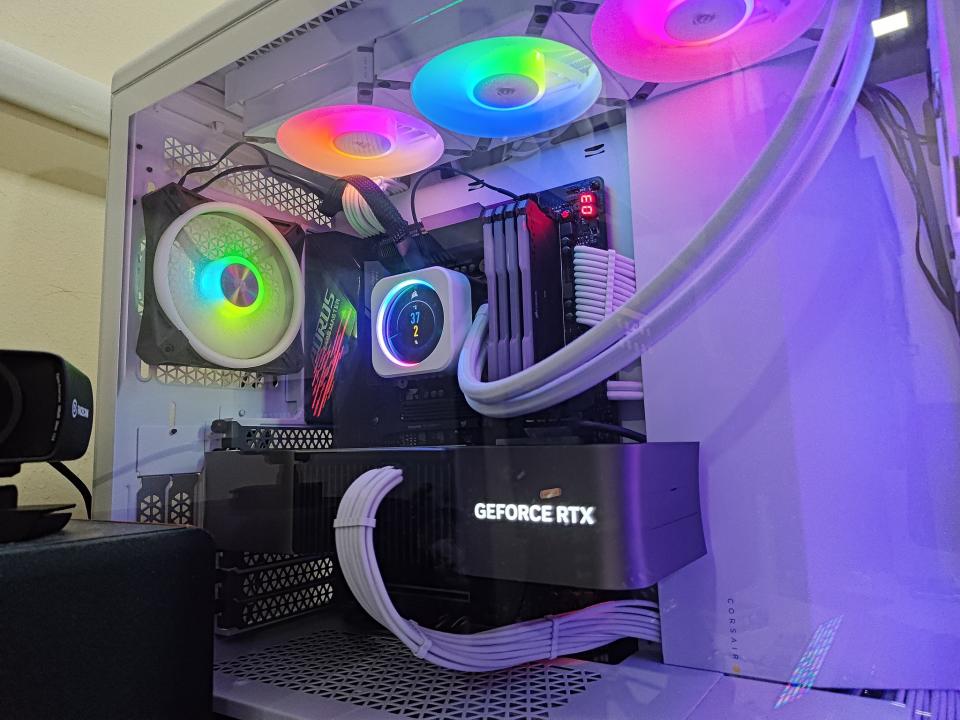
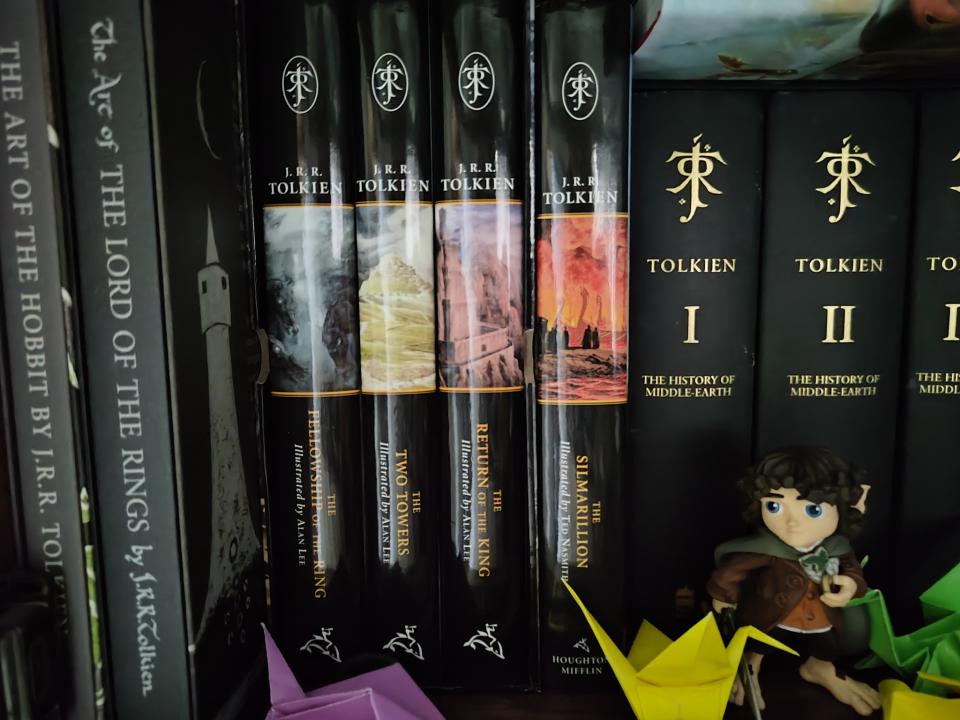
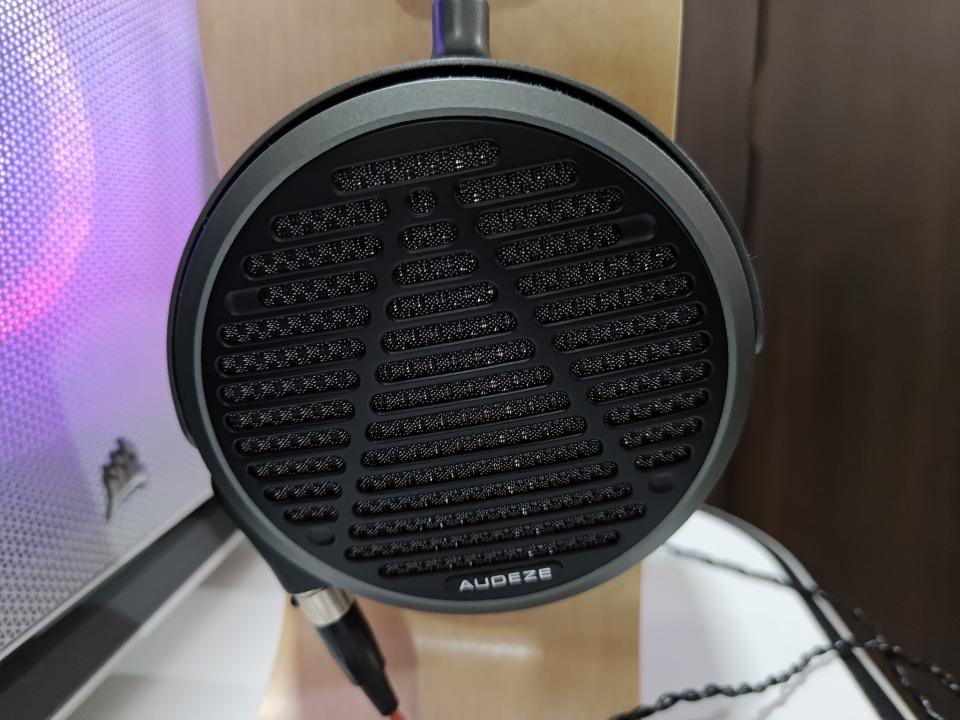
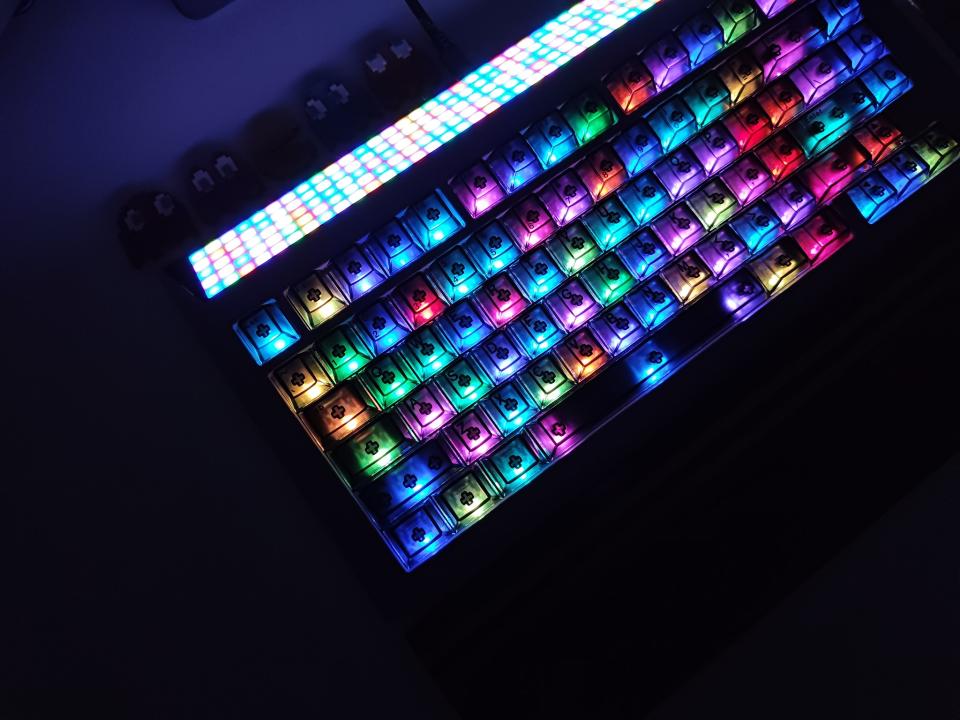
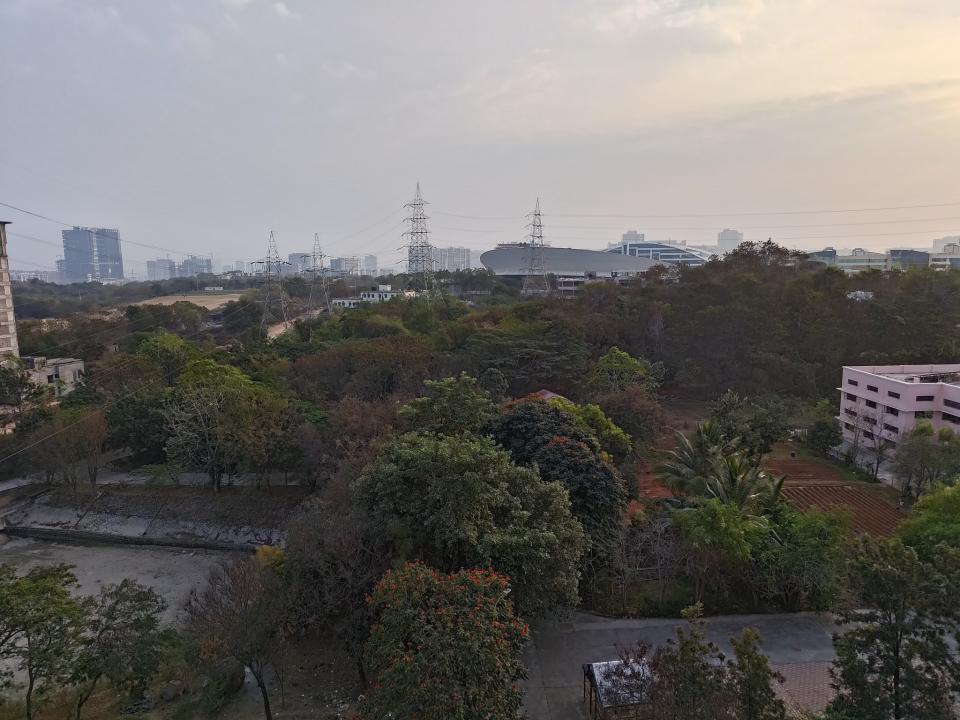



I used dozens of phones that had the Sony IMX890, and even though it's a bit old at this point, this is a reliable sensor that's known to deliver great photos. The ROG Phone 8 Pro produces detailed shots in daylight scenarios, offering plenty of detail and good dynamic range in general. Colors are accurately rendered, and ASUS does a good job in this area. I would've liked a larger module in use here, because in certain situations, the camera tends to smoothen out granular details, particularly with foliage.
The wide-angle lens does a good job as well, and other than scenes with little to no ambient light, I got usable shots out of the module. I was interested in the 32MP telephoto lens, as that's been the biggest omission in previous years, and it does a decent job at 3x zoom. The phone uses in-sensor zoom to shoot 2x, switching to the telephoto when using 3x and beyond.
Even at 2x, there is a noticeable difference in detail rendition, but you get the same color balance as the main lens. That isn't the case with the 3x module, and it tends to wash out colors in a few situations. This isn't always the case, and for what it's worth, the lens itself has a lot to offer — ASUS just needs to tune its algorithms a little better. What's irksome is that the Indian version of the phone won't come with the telephoto lens, with ASUS offering a macro module instead.
The phone takes good shots in low-light situations as well, but it limits the exposure levels to minimize noise and grain — the low-light keyboard shot above illustrates this well, where you can only make out the silhouette of the wrist rest. That said, this is a much better showing than previous years, and while the camera isn't going to challenge the best that Google and Xiaomi have to offer, it is no longer a limitation.
ASUS ROG Phone 8 Pro: Software
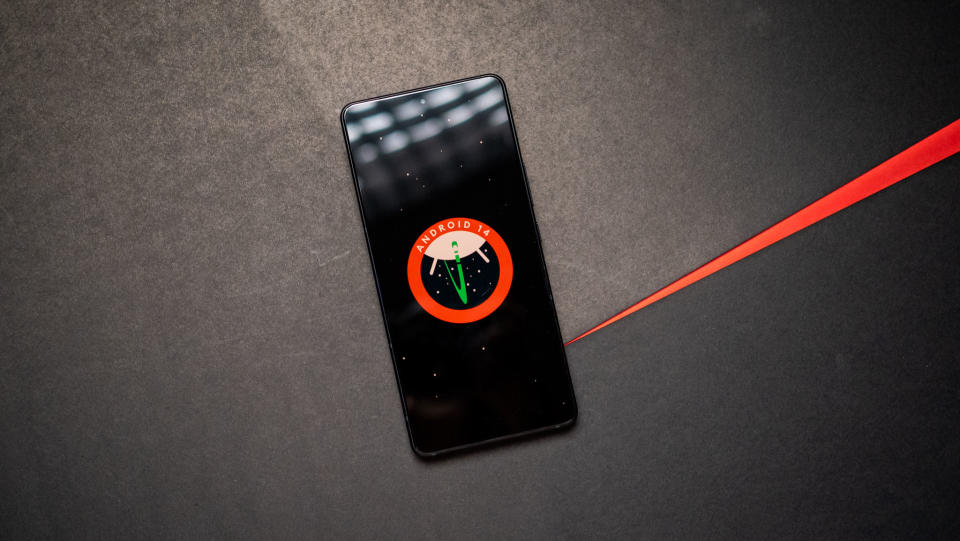
The ROG Phone 8 Pro runs Android 14 out of the box, and it comes with ASUS's ZenUI interface. Most phones I use these days have bloated interfaces with plenty of needless customization, so it's great that ASUS continues to offer a clean interface. That's if you want a vanilla Android UI without any overt styling; if you're a fan of the gamer-focused interface that was a feature in previous years, you can always switch to that in the settings.
But I prefer the standard version of ZenUI, and it gets a lot right. The interface is clean, you get extensive customizability, and it is fluid like no other device I used — it reminds me of legacy versions of OxygenOS. ASUS lets you tweak various UI elements, including the volume panel, incoming call view, power button menu, and notably, the notification pane. You can use the large tiles that debuted with Android 12, or the smaller round tiles if you need more toggles in the pane.
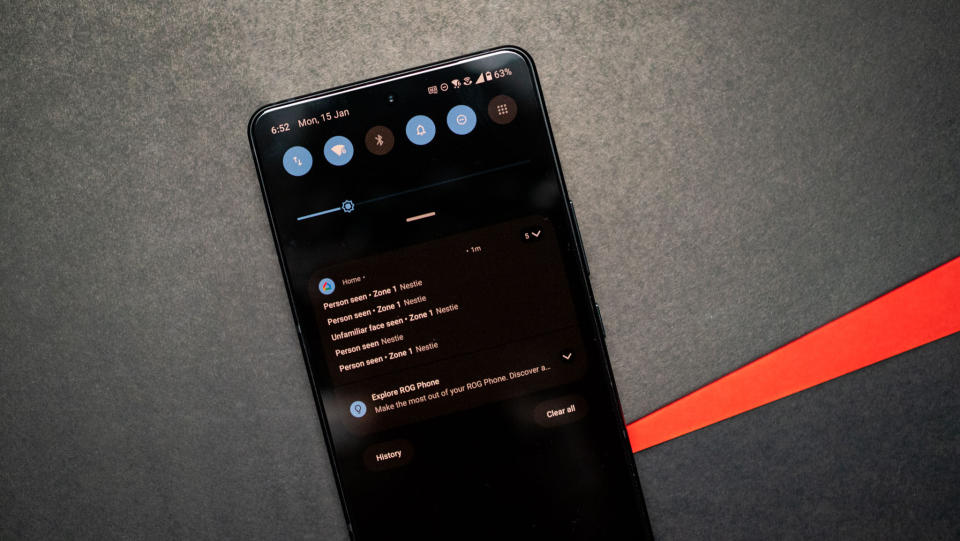
This is the only other device outside of the Pixel series that doesn't have any bloatware — that's an achievement in and of itself. I tested the phone with software build 34.1410.1410.18, and just a few hours before the review embargo lifted, ASUS rolled out the 34.1420.1420.173 build with stability tweaks.
While I like a lot of things about the interface, there have been a few bugs along the way; I didn't get any push notifications in Gmail or SMS Organizer, so I constantly missed timely alerts. Setting the memory management for these to Unrestricted didn't make a difference either, and even on the stable build, I didn't see any notifications.
Outside of that and a few glitches with app launches, ZenUI managed to deliver a great experience that's very different to what you get on most other phones. ASUS is also adding a few AI features to the device, including a semantic search that runs entirely on-device. And you get integration with Phone Link, similar to Samsung's phones.
The biggest problem on the software front is software updates; ASUS will only deliver two Android OS updates and four years of security updates to the ROG Phone 8 Pro, and that is nowhere close to being enough for a device that costs $1,499. With other brands now offering four updates as standard — and Google going up to seven — ASUS is distinctly on the backfoot here, and the brand is unwilling to change its stance.
ASUS ROG Phone 8 Pro: The competition
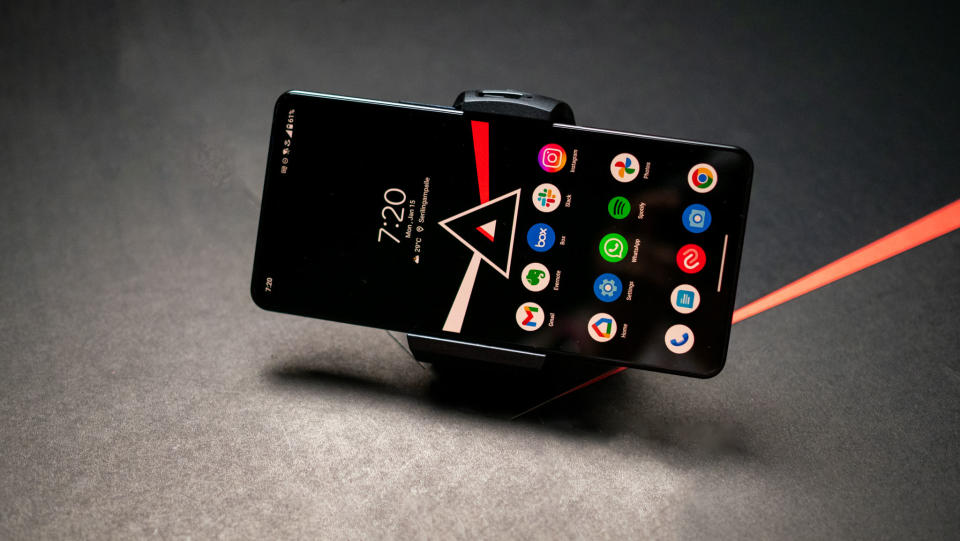
The OnePlus 12 is on the horizon, but ColorOS isn't designed for gaming, and you don't get to play demanding titles at over 60fps. So that ultimately makes it a poor choice if you want to enjoy high refresh rate gaming. I'm excited to see what Xiaomi does in this area with the Xiaomi 14 Pro, but that device is still yet to make its global debut.
The iQOO 12 is a fabulous alternative that gets a lot right. It also has a gorgeous design, comes with the same Qualcomm platform, and has excellent battery life. The software isn't as refined, but it doesn't have any gaming-related limitations, and it will get three OS updates. Oh, and it's a good value as well.
ASUS ROG Phone 8 Pro: Should you buy it?
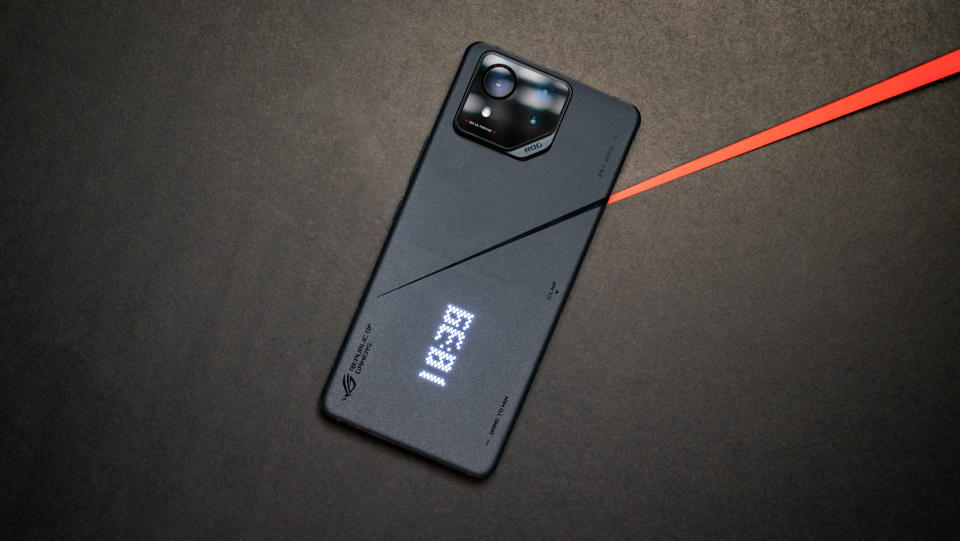
You should buy this if:
You're looking for the best performance on Android
You want a phone with a great design
You need a vibrant AMOLED panel that goes up to 165Hz
You need versatile cameras that take great photos
You want clean software with zero bloatware
You shouldn't buy this if:
You want long-term software updates
You need flagship-tier cameras
I used a lot of gaming phones over the years, and the ROG Phone 8 Pro is in a league of its own. The new design means it isn't embarrassing to use in public, the upgraded AMOLED panel is outstanding, and the hardware is the best of any phone you get today. ASUS continues to do a great job delivering useful extras that make gaming highly enjoyable.
ASUS made meaningful changes to the cameras, and while it isn't quite on par with the likes of the Xiaomi 13 Ultra or the Pixel 8 Pro, it is significantly better than its predecessors, and that's what ultimately matters. But what I like the most is the clean software; that's a rarity in a segment where flashiness is the norm.
ZenUI offers a nice balance between features power users need, and ease of use. There isn't any overt customization nor bloatware to be found, and that's just refreshing. The biggest drawback is that it will get just two platform updates, and that just isn't enough in 2024. All other major brands now guarantee at least four Android OS updates, and ASUS needs to change its stance if it wants to charge $1,499 for the phone.
On the whole, you're getting a terrific gaming phone — but the ROG Phone 8 Pro is so much more than that. Even if you don't end up playing many games, it is a magnificent choice.
